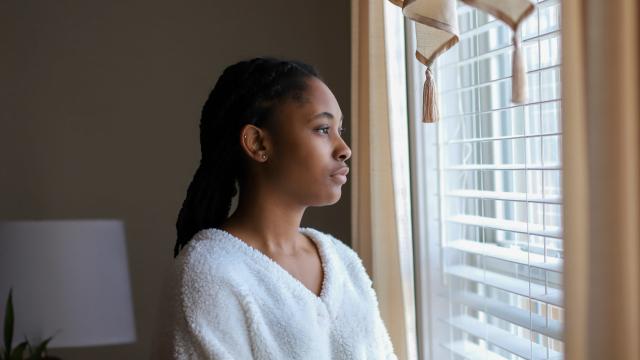The temperature is dropping, the days are shorter and we’re reaching for our hoodies a little more often. Winter is well on the way, and aside from the few of you who love the cold (I don’t understand you) many of us are feeling pretty blah about it all.
While that’s common and not necessarily something to be concerned about, a significant shift in demeanour could be a sign of something a little more complicated. I chatted with psychologist Nancy Sokarno of Lysn to gain a little more insight on this topic.
Here are the signs you may be dealing with what psychologists refer to as SAD.
First of all, what is SAD?
Short for Seasonal Affective Disorder, SAD is a “psychological experience” usually attached to the cooler months of the year.
“SAD is thought to be caused by changes to our body’s circadian rhythms or our ‘body clocks’. It often happens in winter due to the body producing less of the hormones melatonin and serotonin, which affect sleep and mood,” Sokarno shared over email.
It goes well beyond simply feeling more run down in the winter months, SAD can seriously impact your sense of well-being at this time of year.
How can you tell if you’re experiencing Seasonal Affective Disorder?
This is a bit of a tricky one. Discovering whether or not you struggle with this experience really boils down to taking note of your emotional and mental response to the winter months, each year.
Sokarno explained that “someone suffering from SAD can display similar symptoms to someone suffering depression – generally feeling down about life, lacking energy, changes in sleeping or eating patterns and not getting pleasure out of things you might normally enjoy”.
However, pinpointing that this experience is SAD specifically is hardly straightforward.
“SAD can be harder to diagnose as you might need to experience it each winter over several years to understand what is going on,” she shared.
What are some ways to help lessen the impact of SAD?
Much like any mental health challenge, your best move is always going to be reaching for support from a mental health professional.
Sokarno said, “A psychologist can help determine what you’re suffering from and will offer actionable methods of treatment”.
In addition to that, however, it’s worth taking a look at your general sense of well-being. Eating well and exercising regularly, for example, can have an incredible impact on your headspace.
…possibly the most underrated benefit [of food and fitness] is what looking after your physical health can do for your mind, Sokarno shared.
Avoid foods high in sugar, and those that are heavily processed, and “try and find movement that feels good for your body”.
Tools you can use every day
Sokarno also recommended trying to challenge any negative thoughts you may be having. When you notice your mind is running away with you, take a moment to write your thoughts down and consider how true they are.
“You’ll notice as you write them down, they’ll look exaggerated and excessive,” she said.
“Don’t stop there. Write down a more realistic, kinder and objective thought” to replace the negative one, she suggestsed.
Another great way to ward off the symptoms of SAD is by spending time with loved ones who leave you feeling seen and appreciated. Sokarno gave the examples of ice skating or a movie night with pals to help you make the most of the cooler months.
Lastly, winter is also a really great time to commit to getting into mindfulness.
“Things like meditation, yoga, affirmations and breathing exercises all allow you to focus on being in the present moment and appreciating the now,” Sokarno explained.
If you’re new to mindfulness, I can say that the Calm and Headspace apps are both wonderful introductions into this world.
Hopefully, by adopting these small lifestyle changes, you’ll notice a general boost in your mood going into winter. And if not, know that there’s always help available should you need it.
Lysn psychologists are available to be booked for a virtual chat, and you can also find support through services like Beyond Blue and Lifeline 13 11 14.

Leave a Reply
You must be logged in to post a comment.